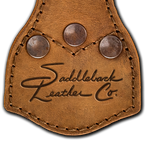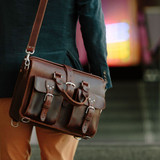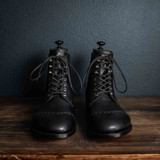Why is Italian Construction High Quality?
Blessed is the great grandson who has your same shoe size
When people ask, "Why are your high quality shoes so expensive?", I say, "You're asking the wrong question. Why are their high quality shoes so cheap?" As you are about to learn, it is the sum of many excellent details, apart from the materials, that make them look like new for decades as opposed to a few years.
I always wondered why the Italians had such an esteemed reputation for high quality footwear until I spent time with them to understand. These shoemakerse give OCD a good name, with their obsession to detail—perfect stitching, old world quality construction techniques by doing it right above all else. And I'm about to share with all you will ever want to know about it.
A friend of mine, who has been in the high quality footwwear industry for almost 40 years, told me that 100% of shoes that we'll get out of Italy will be perfectly built.
Why Does Italy Have Such a Culture of Quality?
Since Italy is such a beautiful country geographically, that has bred artists who must paint that beauty. That painting created a culture of sculpture and art so that 70% of the world's most famous art was created in Italy. That created a culture of beauty in architecture which flowed over into being the hub of high fashion. A life being surrounded by all of that, naturally creates a culture of quality. With that reputation, the demand for high high quality shoes designed with high quality shapes, expensive materials and difficult to sew shapes stays strong. And then the old saying comes true, Practice makes Perfect. Italy is the easy button because we all know that 100% of what comes out of Italy will be of the highest quality everytime.
An Italian explained to me that if a Chinese baby is adopted in Italy and grows up seeing and appreciating the art and beauty and quality of everything around them, then they will insist on doing quality work and will even argue with their boss if they think the instructions could create a low quality result. If that person is a Chinese immigrant hired to sew, they will see a fatal flaw in the instructions and go through with it anyways all day long. In general, they don't want to disrespect authority by asking a question or raising a concern.
I've talked with many people in manufacturing for high end brands and the common reason why they go to low labor cost countries and then leave after a couple of years is because of the consistency of the quality for one reason or another, but not in Italy.
The Rarest and Most Difficult Shoe Ever
We sampled some of the shoemakers with a reputation for quality in Europe and they either said the people with those skills had either retired or died or they said it would be too hard to learn. In Italy, we found a family who has, from generation to generation, passed down some of the finest techniques and generational wisdom from the masters who built their incredible reputation. There is no question why the highest of fashion brands of the world goes to them for their specialty highest of quality projects. The grandfather said he had never seen a shoe construction and rare as this and that it was the most difficult shoe they had ever worked on, but they agreed to do it. We struck gold with them.
There are at least 100 different steps required to put together a shoe like ours and we use the most excellent and time consuming techniques on each of those. In fact, extra time and steps were injected from how a normal factory would put them together, to get the result we do. That is expensive because labor is expensive. But we thought you'd appreciate it a shoe that has tighter tolerances, holds together and looks better for longer. Let me explain what separates our construction from most.
The Sum of Dozens of Small % Differences
The following tiny details may not seem like a big deal individually, but when you add them up at the end of the day, the percentage is HUGE in how long a shoe will last and how it will look decades later. Some pertain to strength, CAN I wear them. Some pertain to aesthetics, DO I WANT to wear them.
Is There a Better Way to Cut Leather?
A knowledgeable leather cutter is the difference between a high high quality shoe and mediocrity. Cutters don't start out cutting. They must learn the entire shoe before they can earn that role because they must understand what they are cutting and why. Some craftsmen are proudly cutters for the last 25 years of their shoemaking career.
They cut the leather according to their understanding of and concern for the natural stretch direction and orientation of the leather’s grain and fibers and according to the varied thickness on the same hide from one inch to another. Having different thicknesses of the leather meeting up to be sewn together, messes up the shoe and the intention of the pattern.
Understanding The Stretch Is Critical 20%
Leather does not stretch much in the head to tail direction, but it stretches quite a bit from spine to belly. Since we don’t want the shoe stretching wider from the foot pushing the sides out from the thousands of steps we take each day, we cut all of the patterns so the stretchiness goes from heel to toe and not side to side. If one pattern is cut in a different direction from the others, it will affect the quality as the shoes move and flex over time.
Say No To The Belly 20%
And, we only cut pieces from the tightest parts of the hide and therefore throw away a lot of leather. In fact, the Italian tannery we buy from cuts off the stretchy leather of the belly of the cow before tanning the skin and sells it for uses you don't want to know about. The reason is because from the ribs down to the bellybutton of the cow is the area that stretches and moves around a lot in life and so has a looser collagen fiber matrix.
The skin attached to the meat does not stretch much in everyday life and that's all our shoe workshop receives to cut from. Most companies receive the hides split down the middle of the cow, from spine to belly, and cut as many pieces out of that hide as possible and from all angles. Wherever a patten can fit, including from the loose belly leather, they cut it. I've seen it personally.
We Throw Away A Lot of Leather 30%
While we can cut maybe 4 pairs of shoes from an entire cow, most factories cut at least 10 to 12 pairs from each cow. Which means we spend about 3X on leather for each shoe. And, of course, we only use the tightest fibered leather we know of. Of course, Tighter fibered hides exist but not in any significant volume. This expensive leather that we throw into the trash adds significant cost to the shoe, but we believe it’s worth it because it makes the shoe last and look better for so much longer.
Cutting The Critical Toe Cap 10%
We also only cut the toe cap from the section of the hide nearest where the tail and spine meet, because that has the least amount of stretch and the tightest fibers of the whole cow. This particular cut is for the piece that gets the highest amount of abuse and the most eyes on it of the whole shoe, the toe cap.
Why is Handlasting Better?
What Is A Shoe Last?
A last is the piece of wood or plastic that is the shape of the shoe. Leather is wrapped around it and it takes on that form. Most lasts are fairly symmetrical on both sides so that the shoe can be heated, moistened and wrapped over the last and then help up in a machine so the machine can kind of suck the leather evenly around the last really tightly.
Why We Have To Handlast?
Our last is shaped to the anatomical shape of the foot, based off of the healthiest shoe in history, is not symmetrical. It is asymmetrical and swung to one side so it helps the foot mimic how a barefoot takes a step. And that keeps the foot strong and doesn't weaken the arch. Because of our complex last shape, a machine cannot be used to last it. We have to handlast it which means we have to pull the leather around the last by hand, which always gives a higher quality result.
Why Is Machine Lasting Inferior?
The looseness and tightness or thickness and thinness of the leather varies from inch to inch on the same hide. When a machine pulls the leather around the last, it stretches it all uniformly, at the same tension, even if it overstretches a really tight area or doesn't stretch a looser area as much as it needs to be stretched.
Why Handlasting gives a better result? 15%
When someone handlasts, they pull by the feel of the tension and then tack the leather in place. If the leather needs to be stretched a little bit more because it's loose and they don't want it to stretch more later, they pull it tighter. If it shouldn't be stretched anymore because they know it will become too thin or possibly tear, then they pull it around the last less. It takes a lot of practice to get handlasting right, but it's worth it for the longevity and integrity of the leather.
Why is The Stitching so Important for High Quality?
Medium to Low quality shoes are rarely enjoyed and rarely get complimented because they have easy to sew patterns and generic shapes that are manufactured for the masses. That means those companies don't require stitchers with highly refined skills because 'good enough' is all they ask for. Those stitchers could hone their skills if they were to practiced more, but they don't the chance. At our leather factory in Mexico that we are owners of, our stitchers know what is expected and have years of experience practicing sewing high quality leather bags.
They're Used To Stitching Hard Shapes and in Tight Places 30%
A lot of times, the difference between a shoe that gets compliments and one that doesn't is the sum of dozens of small subtle design details together, like curves and slopes of the design. Read here about all of those design considerations. But those aren't easy to sew and they often have tight curves that require a stitcher with a lot of practice to do it right consistently. Our classy and healthy yet deep and narrow arch is one of those features that at first the factory said needed to be wider because it was too hard to sew with quality everytime. becasue of our beautified Munson Last. When we explained to them how that feature was part of what corrected the feet of so many millions of soldiers, they figured it out and do it right everytime.
I ask them to stitch very close to the shoe so we can sand off the edges of the sole. I don't like the sole sticking out too far with this style since it is not as casual as other shoes. I just think it looks bettter. But that tight stitching is not easy to do. To understand more of my thinking on design, click here.
Italian And German Machinery Rule Together In Peace 20%
When it comes to high quality leather tanning and leatherworking machinery, Italy rules supreme because they invented it all. Necessity is the mother of all invention and since they're the easy button for high quality work, they've had to adjust up. But they bow the knee to the Germans for their sewing machines. They are sometimes twice the price of the average machine, but the Germans engineered them to make sewing in tight places and with tight tolerances twice as easy. They're tough to compete with.
Eliminate Thread Wear By Burying It 15%
The English specialize in sewing the sole to the upper body of the shoe with a machine that carves out a channel into the leather for the thread to sew deep down into so it doesn't get rubbed apart with each step. The Italians removed rubbing altogether by slicing the sole at a 60 degree angle, sewing down into it and then flattening and glueing that flap of leather down on top of the thread again. That eliminates the thread from ever even seeing light. It's a lot of work, but an amazing technique to keep the thread lasting longer and giving it a more refined look.
Tight Stitching Into The Channel Not Gaps On The Rib 10%
This is one of those 10% differences and no one does this anywhere in the world that we know of but in Italy. Why this is important is because the tighter the shoe is, the less movement or small gaps there are in a shoe, the better it is for watertightness and movement. Okay, close your eyes and imagine this and read at the same time.
There is an extra thick slab of leather lightly tacked to the bottom of the shoe last and it is upside down so it's facing the ceiling. That is the insole that your foot rests on. The upper leather is all put together with the lining and bulletproof eyelets and is on the opposite side waiting to wrap around and be sewn to the insole. There are two ways of attaching it.
They can glue a 1/2" wide strip of fabric that has a sharkfin sticking up in the middle, all the way around the insole and then sew the edge of the upper to that then hammer and glue that down to the insole with the whole canvas strip and the rib. But there's a gap in there.
Or they can make an angled slice into the bottom of the thick insole, then lift up that flap of leather and sew the upper to that and then tuck that edge down into the slice and glue and hammer it back down. Now its' pretty much watertight. I just don't like that gap the rib leaves and the extra fabric of the strip. It's ike a glove made for one's hand versus a generic glove that's a little sloppy on the hand. The tighter the tolerances, the better.
Four More Key Construction Details
Leather Slab Filling 25%
This is a longterm play, but you'll be so glad we do this because it stops a squeak from happening later and it makes it more comfortable. After the upper is sewn around the edge of the insole, the edges on the insole are now raised up above the surface of the insole and the middle part needs to be filled in so it's flat for when you put the outsole on the bottom.
There are two types of filling people put in there. The cheap and common filling is glue and cork paste that they squeeze out of a tube and smear between the upper edges. The problem with the cork puddy is when it dries out, it often cracks and then squeaks.
The other option is the more expensive one where they cut another slab of leather to fit in that gap and glue it in. This is the best option because the pad of leather also acts like padding and takes in the shape of your foot. When the shoe is resoled in the future, they pull out that formed leather and put it back in instead of spreading new cork paste in there. But it's definitely the more expensive option.
The Mr. Goodyear Welt 40%
This is not unique to Italy. It is how almost all high quality shoes company attach the sole of their shoes to the body of the shoe, for a couple of strong reasons. It makes the shoe pretty much waterright when you're in the rain and It makes resoling the shoe really easy. Read how it works here.
Another quality conern to watch out for is that when they are attaching the body of the shoe to the sole, that they have the thread run through warm glue to coat it so that even if the thread wears away over time, that the thread that is still in the hole is still holding things together.
If someone makes a shoe with another method, it's often because they want to save money or because the factory doesn't have the money to buy the very expensive welting machine. You know it's a sign of qualitiy because some companies will sew in a fake aesthetic stitch and then glue down the edges of the upper to make it look like Goodyear welted construction.
Rust Or No Rust Nails? You Decide 70%
This is not unique to Italy either, but its not as common as it should be. When reinforcing the attached heel or the toe or the arch area, it is good to tack in nails to reinforce. We use brass nails that do not rust but low quality companies save a buck by using regular metal nails that rust. That is short term thinking.
Finished with Finishing
I absolutely love the way the shoes are finished. If you buy a pair, you'll understand right away as you spin the shoe around in your hand. It is breathtaking how they care about the finest of details when painting little corners, sanding the same distance from the stitch to the edge of the sole evenly all the way round. The folded edges around the ankle and the fine arch and perfect stamps. The nails are perfectly spaced and the colors are perfectly matched to tint the leather sole. Their finishing is as good as they finish in England.









